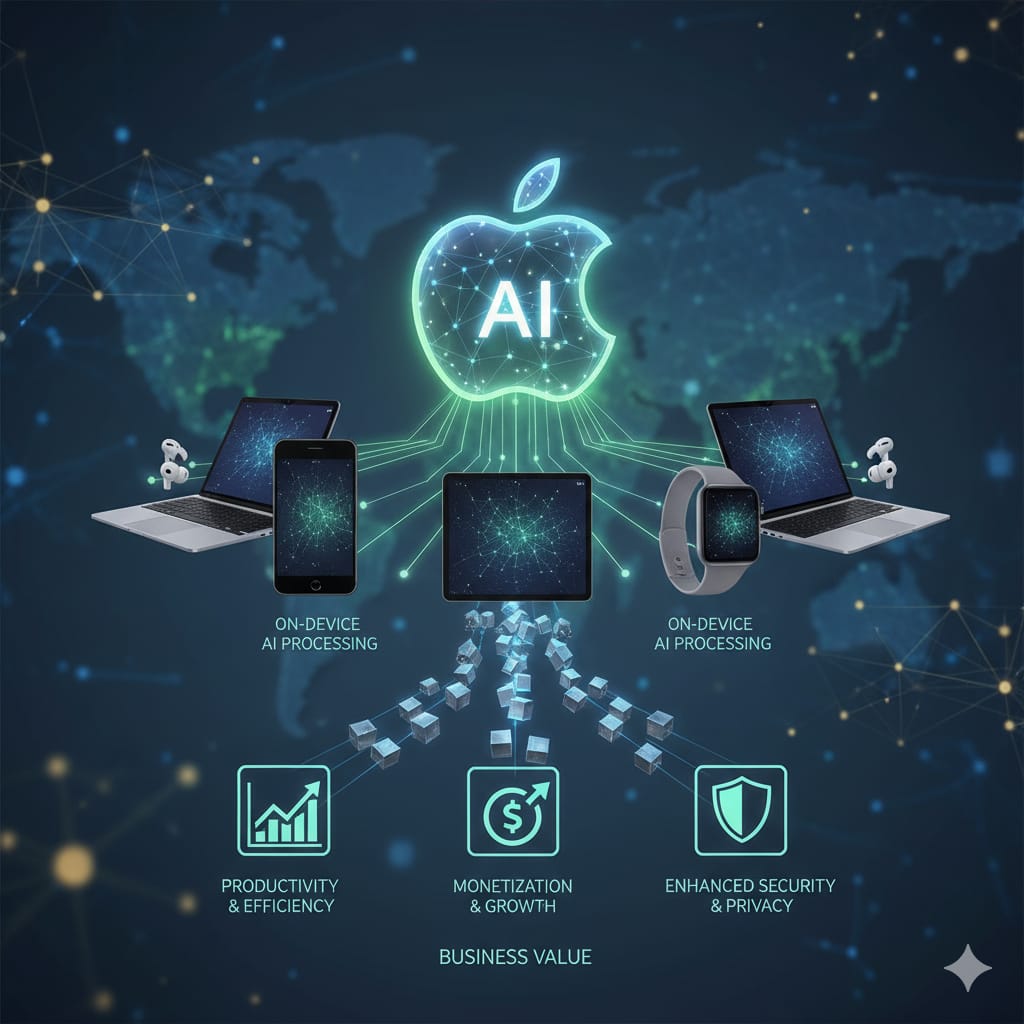Apple’s On-Device AI Strategy: A Business Perspective
In the evolving landscape of artificial intelligence (AI), Apple distinguishes itself through a unique approach centered on on-device processing. Unlike many competitors that rely heavily on cloud-based AI solutions, Apple emphasizes local computation to enhance user privacy and improve processing speeds. This strategy not only addresses critical concerns about data security but also creates significant business value by leveraging Apple's tightly integrated hardware and software ecosystem.
Key Advantages of On-Device AI
Apple's focus on running AI directly on its devices carries multiple benefits:
- Enhanced Privacy: By processing data locally, sensitive user information remains on the device, reducing exposure to external servers and potential breaches.
- Reduced Latency: On-device processing ensures faster response times since data does not have to travel to the cloud and back.
- Optimized Performance: The integration of Apple's custom chips with optimized AI models maximizes efficiency and power consumption.
Real-World Applications Driving Business Value
Apple’s on-device AI powers several features that highlight its business impact:
- Siri Voice Recognition: With on-device processing, Siri delivers rapid responses while safeguarding user queries, strengthening customer trust.
- Face ID and Biometrics: Facial recognition algorithms run entirely on the device, enhancing security without compromising convenience.
- Photography Enhancements: AI-driven image processing enables real-time adjustments and effects during photo capture without cloud reliance.
- Health Monitoring: Apple Watch utilizes on-device AI for tracking vital signs and detecting anomalies, delivering personalized insights promptly.
Steps in Implementing On-Device AI Solutions
Businesses looking to adopt similar AI strategies can consider these steps:
- Assess Data Privacy Needs: Evaluate the sensitivity of data to determine suitability for local processing.
- Invest in Custom Hardware: Develop or acquire chips optimized for AI computations to ensure performance efficiency.
- Develop Robust AI Models: Create lightweight AI algorithms capable of running effectively on device constraints.
- Integrate Hardware and Software: Ensure seamless collaboration between system components to optimize AI workloads.
- Test and Iterate: Continuously refine AI models and hardware integration to balance responsiveness, accuracy, and security.
Risks and Challenges to Consider
Despite its advantages, on-device AI also presents challenges:
- Resource Limitations: Devices have restricted processing power and battery life compared to cloud infrastructure.
- Model Complexity: AI models may need to be simplified, potentially reducing accuracy or capabilities.
- Update and Maintenance: Rolling out AI improvements requires updating devices individually, which can be complex.
- Scalability: Scaling AI features across diverse devices may require significant development effort.
Conclusion
Apple’s AI strategy exemplifies how focusing on on-device processing can build business value through enhanced privacy, improved performance, and customer trust. Organizations investing in AI can emulate this model by addressing privacy concerns with local data processing, leveraging custom hardware, and harmonizing software development efforts. While challenges persist, the benefits of on-device AI, as demonstrated by Apple, present a compelling case for its adoption in sectors where security and responsiveness are paramount.
[1] Apple’s AI strategy distinguishes itself through a strong emphasis on on-device processing, prioritizing local computation to enhance privacy and speed.
[2] The approach contrasts with cloud-centric competitors, leveraging Apple’s hardware-software integration to deliver faster, secure AI experiences.




